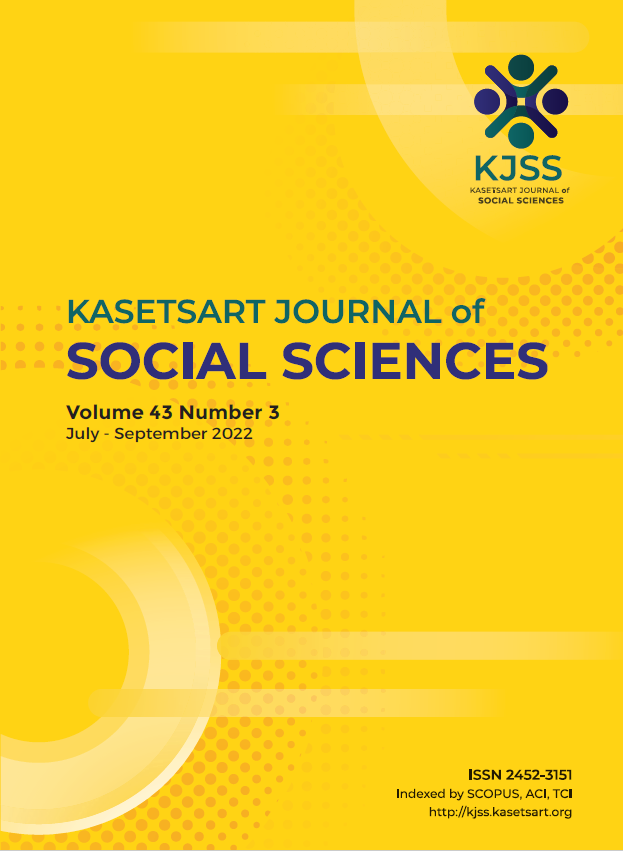Development of the self-awareness scale for secondary school students
Keywords:
accurate self-assessment, self-awareness, self-confidence, young adultsAbstract
This research aimed to explore the quality, develop scoring criteria for the selfawareness scale, and develop a manual for the use of the self-awareness scale for secondary school students. Participants consisted of 966 secondary school students. Quantitative data analysis was conducted using descriptive statistics and confirmatory factor analysis (CFA). To analyze the qualitative data, content analysis was performed. The results were as follows: (1) The self-awareness scale consisted of 3 components: emotional awareness, accurate self-assessment, and self-confidence, consisting of 30 items. The item discrimination power ranged between 0.205 and 0.645. The construct validity using an empirical approach found that the model was consistent with the empirical data. The total score for each component was significantly related to the total score at the .05 level, the correlation coefficients were 0.845, 0.876, 0.895, and the reliability was 0.963; (2) For the norms of the self-awareness scale for secondary school students, the T-scores were in the range of 19.34 to 76.69; and (3) The manual for the use of the self-awareness scale for secondary school students contains the objectives, structure, characteristics, and quality of the scale, time required for the test, test procedures, scoring instructions, and scoring criteria. The instructions are clear and understandable. Teachers can use the manual to arrange tests in actual conditions. Self-awareness scale instrument to measure self-awareness has strong internal consistency reliability.
Downloads
Published
How to Cite
Issue
Section
License

This work is licensed under a Creative Commons Attribution-NonCommercial-NoDerivatives 4.0 International License.
This is an open access article under the CC BY-NC-ND license http://creativecommons.org/licenses/by-nc-nd/4.0/










